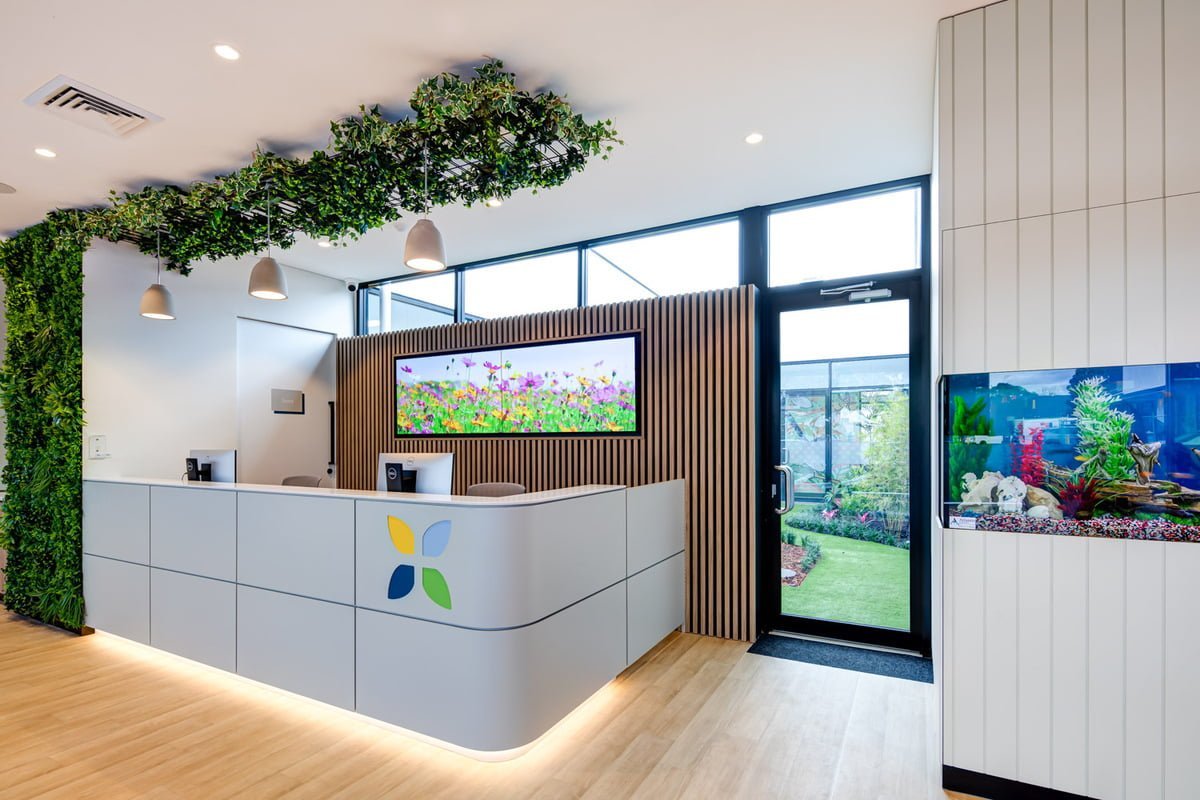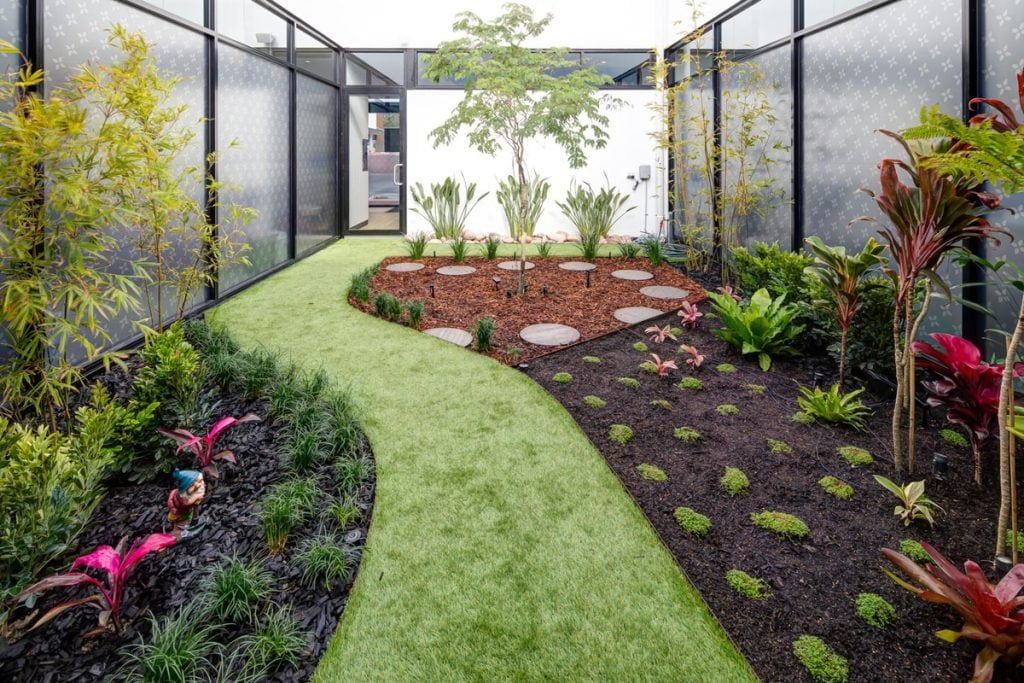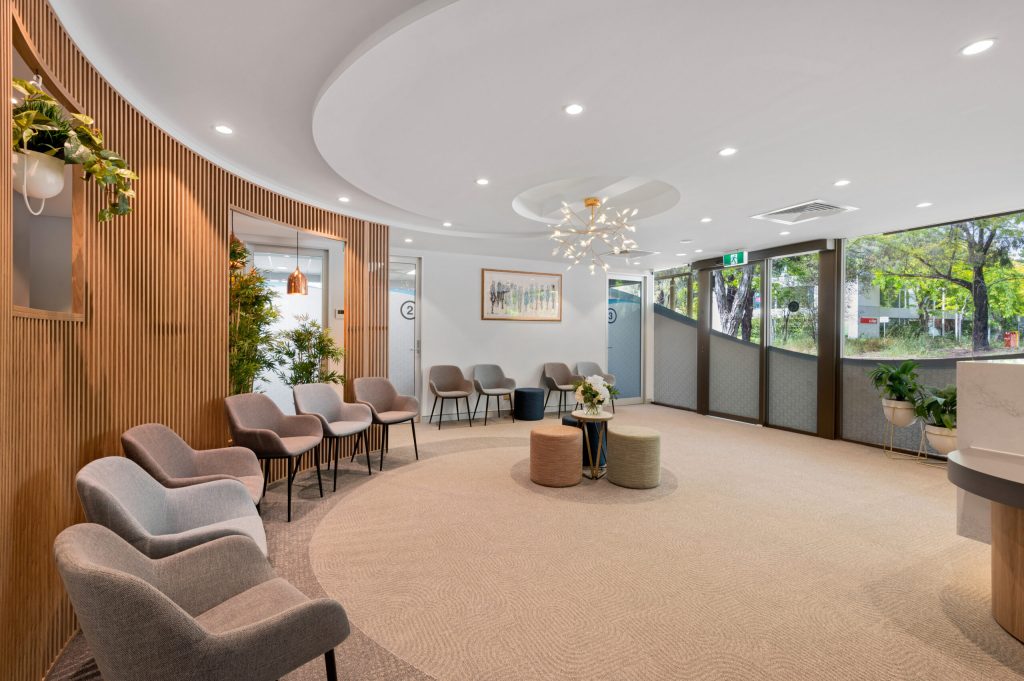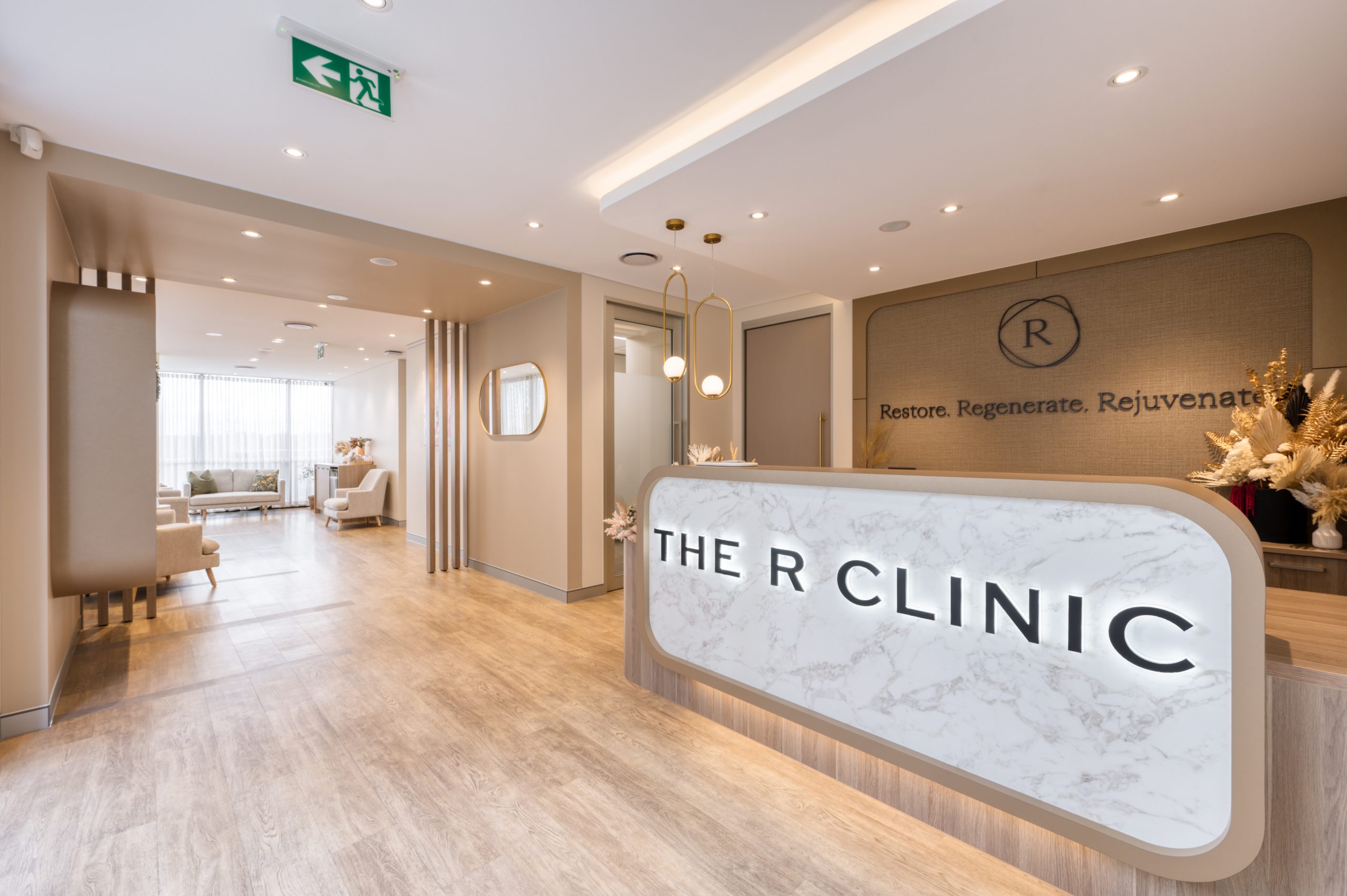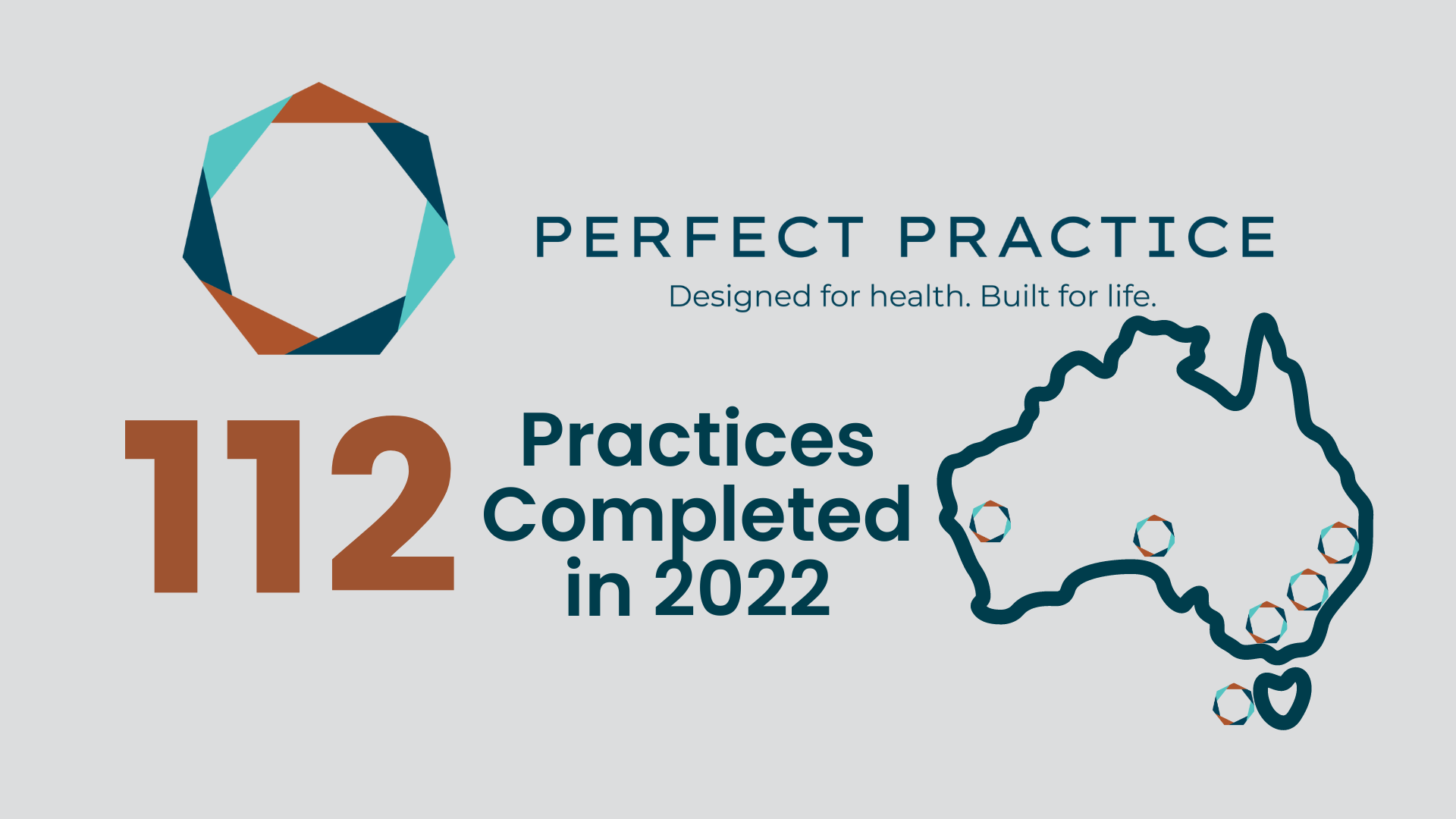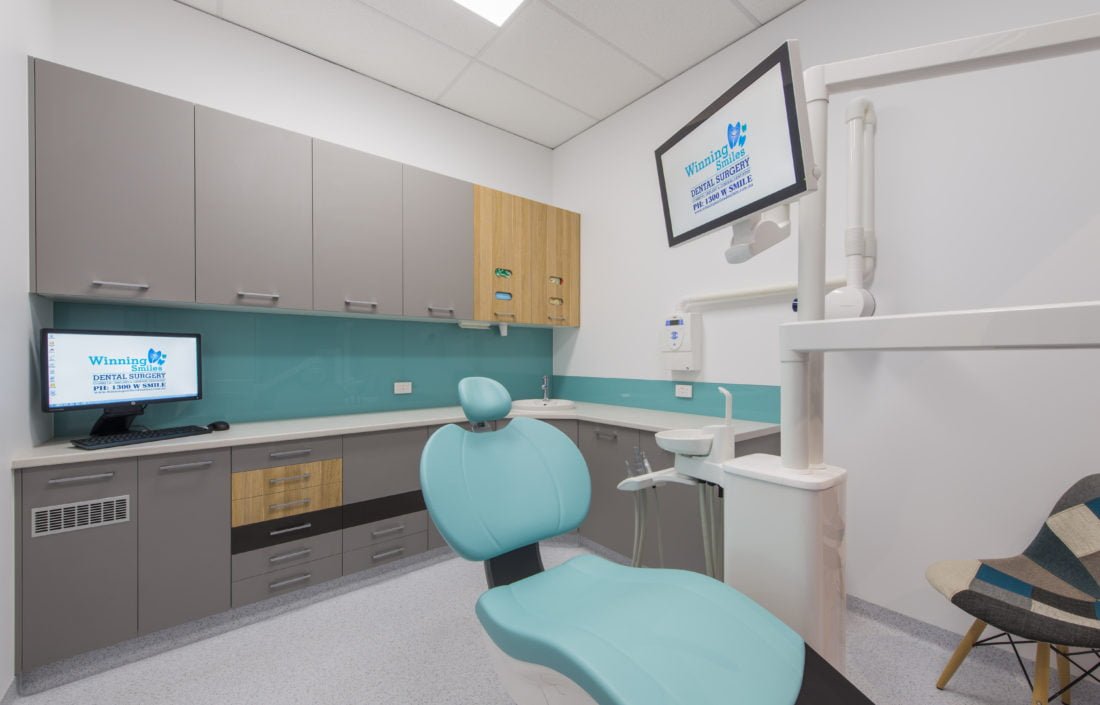You might have noticed that more indoor spaces are starting to look like the great outdoors. This isn’t just a design fad. Bringing nature into interior spaces is a growing trend about improving how we feel. It’s been shown that being close to nature can help us relax and focus better. Thus, many clinics are adopting this nature-inspired approach, believing it contributes to a healthier and more enjoyable patient experience. This is known as “biophilic design.”
Understanding Biophilic Design
The term “biophilic design” refers to the innovative practice of integrating elements of nature into built environments. In other words, “Bringing nature inside.” Gone are the days when architecture and design were solely about aesthetics and functionality; biophilic design principles embrace the emotional and psychological aspects as well. By incorporating natural materials, light, vegetation, and other elements of nature, this design philosophy creates spaces that are not only visually appealing but also intrinsically connected to the natural world.
The Benefits of Biophilic Design
Biophilic design is beyond making a room look good: it has real, measurable benefits for our health and well-being. In healthcare spaces, one of the most immediate advantages is reduced stress for both patients and staff.
When individuals are in a space with natural elements (such as plants or natural light), they may feel calmer and more at ease. Patients are more relaxed and more receptive to care, whereas doctors and staff have a more comfortable and enjoyable workplace that enhances productivity and the sense of gratification.
Biophilic Design Principles
1. Direct Nature Connection
One of the core principles of biophilic design is creating a direct connection with nature. This involves incorporating natural elements such as plants, water features, and ample natural light into indoor spaces.
2. Indirect Nature Connection
Another vital aspect of biophilic design is the indirect connection with nature, which doesn’t involve actual natural elements but instead incorporates natural materials and designs. This means using materials like wood, stone, and natural fabrics in the construction and decoration of the space. Additionally, nature-inspired patterns and textures can be employed in the interior design to evoke a sense of the outdoors.
3. Presence of Water
Including water features is another key principle in biophilic design, adding a unique dimension to the space. This could be anything from a simple fountain in a lobby to an aquarium in a waiting area or even an indoor water wall. The sound and visual appeal of water has a naturally calming and soothing effect, enhancing the overall sense of well-being in the environment.
4. Dynamic and Diffused Light
Lighting plays a critical role in biophilic design. The goal is to optimise natural light by incorporating large windows, skylights, and other architectural features that allow sunlight to flood the space. However, it’s not just about daytime; diffused lighting solutions can mimic the qualities of natural sunlight, offering a sense of the outdoors even when the sun has set. This lighting approach does more than merely illuminate a room; it creates an atmosphere that can positively impact well-being, reduce eye strain, and enhance mood.
5. Natural Shapes and Forms
Incorporating natural shapes and forms is another essential principle in biophilic design. The aim is to move away from rigid, angular designs that can feel jarring and disconnected from nature. Instead, furniture and decor should echo the organic forms in the natural world, such as curves, spirals, and wave-like patterns. These design elements foster a more harmonious environment and evoke a sense of natural flow.
6. Multisensory Experience
A truly effective biophilic design includes natural scents and sounds beyond the visual elements. For instance, diffusers with essential oils or live plants can introduce pleasant, nature-inspired aromas into a space. Similarly, the auditory environment can be enhanced through natural sounds like the soothing water flow in a fountain or the calming backdrop of recorded birdsong.
Measuring the Impact of Biophilic Design
Does nature-focused design make a real difference? Various tools and methods are available for this purpose, ranging from occupant surveys to more technical approaches like air quality measurements and light level monitoring. Gathering feedback from occupants provides invaluable insights into the emotional and psychological benefits, such as stress reduction and enhanced focus.
The Case for Biophilic Design in Healthcare
Biophilic design is more than just a design trend; it’s a philosophy rooted in our inherent connection to nature. By embracing its fundamental principles—from integrating natural elements and materials to creating a multisensory experience—this design approach offers a healthier, more harmonious way of experiencing indoor environments.
The potential benefits extend far beyond aesthetics, impacting the patient’s well-being, boosting staff productivity, and enhancing overall human experience. As we continue to spend a significant portion of our lives indoors, the adoption of biophilic design principles becomes not just desirable but essential.
Transform your spaces with us
Are you ready to explore the beauty and benefits of biophilia in your projects? From incorporating water elements that soothe to selecting sustainable materials like wood and stone, or engaging the senses with aromatherapy and soundscapes, we’ll plan with purpose and work closely with you to evaluate your space and define clear objectives.
Contact us today to start the conversation about all the ways that our team can incorporate biophilia into your space. At Perfect Practice, we fully understand the factors and complexities involved in making the decision to renovate, update, relocate or establish a healthcare practice. Let’s create an environment that truly nurtures well-being.



